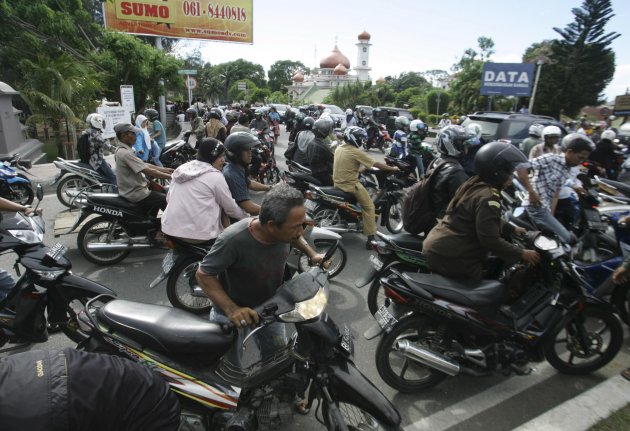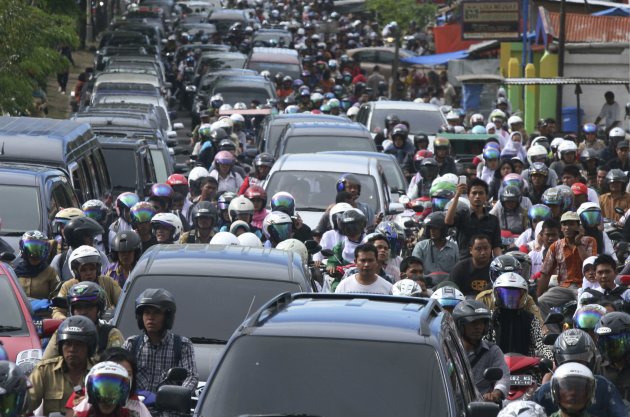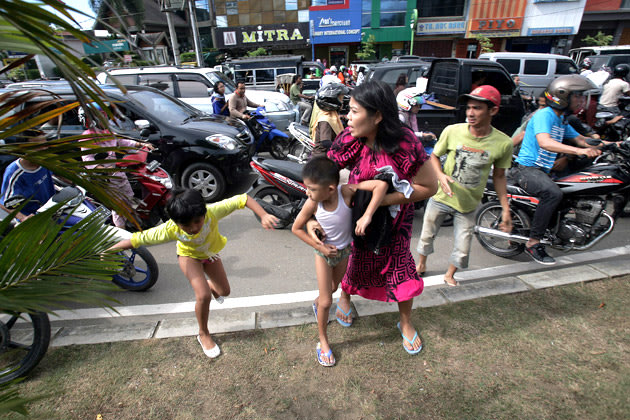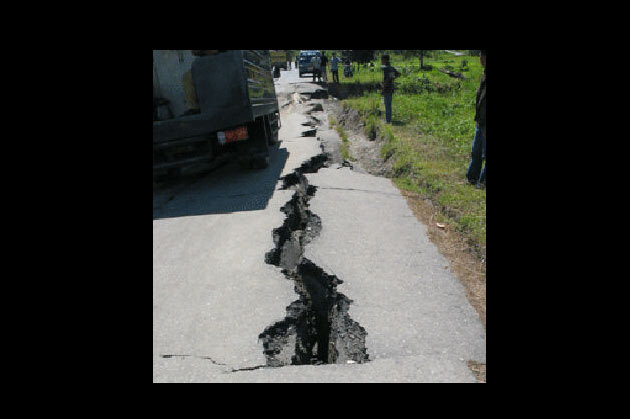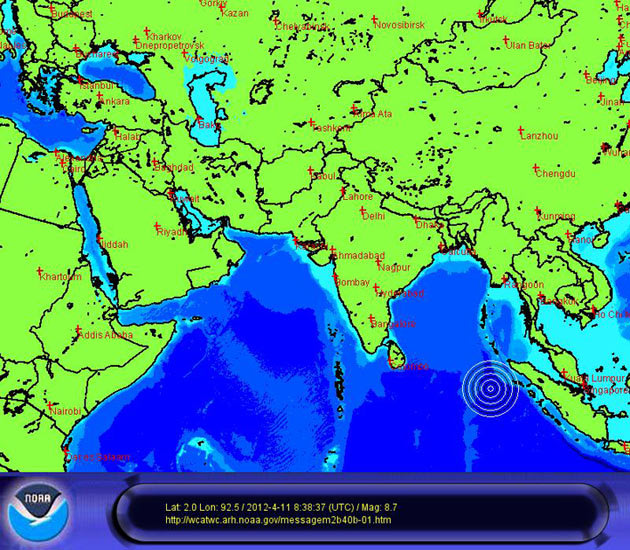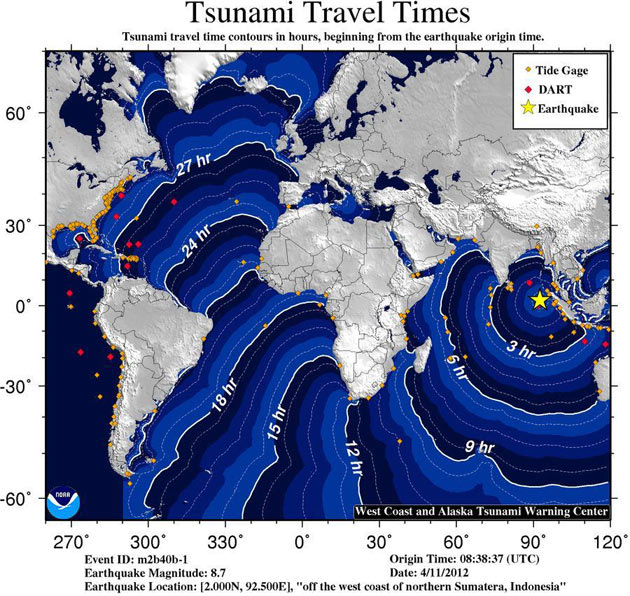|
Monday, April 30, 2012
Jagansindia Celebrating Second Anniversary!!
Thursday, April 26, 2012
Average Year Salary for IT Professional, 2012
| IT skills | Years of Experience | ||
|---|---|---|---|
| Less than 5 years | 5-10 years | More than 10 years | |
| Application Development | 431,616 | 881,376 | 1,364,788 |
| Desktops/Software | 318,395 | 640,154 | 949,618 |
| System Administration | 295,679 | 617,957 | 979,079 |
| Servers/Networking | 349,295 | 666,986 | 1,073,571 |
| Web Development | 447,126 | - | - |
| Operating Systems | 293,032 | 661,507 | 954,408 |
| Database Management | 386,741 | 685,909 | 1,214,667 |
| Web Services | 421,458 | - | - |
| Infrastructure Management | 334,958 | 781,422 | 1,209,714 |
| IT Outsourcing | 419,391 | - | - |
| Consulting/Business Services | - | 993,250 | 1,326,471 |
| Web Development | - | 798,637 | 1,271,278 |
| Enterprise Applications | - | 892,982 | 1,292,105 |
Click Here for More Information
Sunday, April 22, 2012
Thursday, April 12, 2012
Earthquake Safety Tips - Keeping Safe
Wednesday, April 11, 2012
India ends tsunami alert after Indonesia quakes
India withdrew a national tsunami alert issued after huge earthquakes struck off Indonesia, the Indian tsunami warning centre said. Disaster officials had earlier warned waves as high as 3.9 meters could hit parts of India's Andoman and Nicobar islands. A few thousand people were evacuated from the more vulnerable islands, a police official said.
6:50 pm: Major world earthquakes of 2012
A list of major earthquakes in the world in 2012, according to the US Geological Survey. Read on
6:40 pm: India lifts national tsunami warning issued after Indonesia quakes, says danger has passed: Tsunami Warning Centre
6:35 pm: India has lifted tsunami alert. Meanwhile, Thailand, Malaysia, Myanmar and Australia too have followed suit despite the aftershocks that Indonesia has continued to feel.
6:30 pm: US Pacific Tsunami Warning Center cancels tsunami watch for Indian Ocean areas: Reuters
6:20 pm: Tourists ordered off Goa beaches
Fearing a tsunami, the Goa government ordered tourists off the beaches here after a massive earthquake rocked Indonesia.
Speaking to reporters at the secretariat Wednesday, Chief Minister Manohar Parrikar said that vehicles carrying public address systems would ask tourist to stay off beaches and veer inland for safety in case of a tsunami resulting from the massive earthquake in the seas off Indonesia.
6:15 pm: Civil administration in touch with the army. Three planes will fly to Andamans with relief material, Times Now reports.
6:10 pm: Parts of the Indonesia's Sumatra island remain in danger from a tsunami following a series of powerful earthquakes off the Indonesian coast on Wednesday, but damage across the Indian Ocean basin is not expected, an official with the US Pacific Tsunami Warning Center said.
6:05 pm: Indonesia's disaster agency says 1 metre tsunamis detected in Nias island off southern Sumatra and Meulaboh in Aceh: Rueters
5:55 pm: Tanzania and Kenya have now issued tsunami alerts along their coastlines, ABC reports.
5:49 pm: All Indians staying in Thailand's Phuket island have been alerted by the Indian High Commission here following the massive earthquake of 8.7 magnitude that hit waters off Indonesia triggering tsunami fears across the Indian Ocean nations, PTI reports.
5:45 pm: Andaman Islands brace for 4-metre tsunami waves
A few thousand people were evacuated to higher ground from parts of Andaman and Nicobar islands on Wednesday following earthquakes in Indonesia, as the islands prepared for tsunami waves up to 3.9 metres high, officials said.
5:40 pm: Tidal waves off Andaman and Nicobar being monitored, Times Now reports.
5:35 pm: People from costal areas in Indonesia have been evacuated, police told Al Jazeera.
5:32 pm: A fresh tsunami warning has been issued after a strong 8.2-magnitude aftershock rattled the same area, Al Jazeera reports.
5:30 pm: The Pacific 'Ring of Fire'
In the wake of devastating - and unconnected - earthquakes and tsunamis in Indonesia and Samoa, the BBC News website looks at the so-called Pacific "Ring of Fire" - the zone of major seismic activity which has one of the world's most active fault lines.
5:25 pm: Disasters to hit Indonesia since 2004
Following is a look at some the major disasters, man-made and natural, to hit Indonesia since the Asian tsunami of 2004 as a 8.7 magnitude earthquake struck off the coast of Indonesia. Read on
5:20 pm: Big aftershocks strike Indonesia's Aceh
At least two major quakes with a magnitude exceeding 8.0 hit off the coast of Indonesia's Aceh province on Wednesday, the U.S. Geological Survery said, and a tsunami warning remained in effect.
The first quake measured 8.6 at a depth of 14.2 miles, according to the United States Geological Survey. The second quake was measured at 8.2 at a depth of 10.2 miles.
5:15 pm: Aftershocks in Indonesia include quakes of 8.3, 8.8, tsunami warning extended: Reuters
5:10 pm: 5 of the 10 largest earthquakes since 1900 have occurred in the last 8 years.
5:00 pm: The costliest earthquakes of all time
4:45 pm: Recalling the 2004 tsunami that devastated Aceh
A 9.1 magnitude earthquake struck off the coast of Sumatra in 2004. It triggered a tsunami that left over 200,000 people dead in 14 countries, said CNN. In India, too, several thousand people were killed.
The damage was estimated at nearly $10 billion while the casualties were more than any other tsunami in history, according to the United Nations.
4:40 pm: The Indonesia geophysics agency has extended the tsunami warning in Aceh province for two more hours
4:35 pm: Witness tells Reuters agency that sea water at Simeulue Island near epicentre of quake has been receding by about 10 metres: ABC
4:30 pm: Indonesia's geophysics agency says another aftershock off Aceh of 8.1 magnitude on Richter scale, tsunami potential
4:20 pm: The Union Home Secretary R K Singh has said that there is no cause for alarm along the Indian coastline and that the government is ready to deal with any eventuality.
Despite the scaling down of the tsunami alert, the Chennai port has been shut and fishermen have been asked not to venture out into the sea and to move to higher ground.
Although the likelihood of a tsunami has been almost ruled out, the Indian coastal areas are still on the alert.
NDMA said that there were no unusual waves noticed in the Andaman and Nicobar Islands region yet, indicating that the tsunami is virtually ruled out.
Meanwhile, Kolkata Metro has resumed services after temporary shutdown.
4:16 pm: No likelihood of tsunami in Indian Ocean, says the National Disaster Management Authority (NDMA). The tsunami warning has been scaled down for Indira Point and Kachal in the Andaman and Nicobar Islands region. The US Geological Survey too has said that there is no tsunami threat in Indonesia. Earlier reports said that the tsunami is likely to hit the Chennai coast at around 4.57 p.m.
4:16 pm: Fears of the tsunami hitting the coast of India is lessening by the minute, and here's why: Reuters, citing officials tasked to monitor the tsunami, says the initial wave measures a mere 35 cm (13.8 inches) high. The agency quotes geophysicist Victor Sardina of the Hawaii-based Pacific Tsunami Warning Center as saying that while the first wave appears less threatening in magnitude, the agency continues to keep a close eye on developments, as "tsunamis come in waves."
4:14 pm: Kolkata Metro services resume after being suspended for 45 mins
4:12 pm: USGS: Tsunami less likely
4:10 pm: NDMA: No likelihood of tsunami in Indian Ocean
4:07 pm: Thailand's Phuket international airport closed
The international airport on the southern Thai tourist island of Phuket was closed on Wednesday after a tsunami warning was issued following an 8.7 magnitude earthquake off the coast of Indonesia, its director said.
"We have temporarily closed the airport following the tsunami alert," Phuket International Airport Director Prateung Sornkham told Reuters by telephone. Read on
4: 05 pm: Tsunami warning has been scaled down
4:03 pm: Massive earthquake hits Indonesia
Source: Yahoo
Live! Waves may hit Tamil Nadu coast by 4.30 pm: NDMA
Live: 8.9 magnitude quake rocks Indonesia, tsunami warning issued - News updates from Yahoo
8.7 quake off Aceh triggers tsunami alert
Indonesia quake: Tsunami watch in Indian Ocean
Live! Six-metre high waves likely: Tsunami centre
8.9 quake in Indonesia; tremors/tsunami warning in India
Sunday, April 8, 2012
Siachen avalanche buries 130 Pakistani soldiers
Over 130 Pakistani soldiers are feared buried in an avalanche that occurred in the Siachen Glacier in the Himalayas where thousands of Pakistani and Indian troops are based, a media report said.
According to local media reports, the incident took place at around 6 a.m. Saturday when an avalanche hit an army camp in Siachen Glacier, the world's second longest glacier in the non-polar areas, Xinhua reported.
The Siachen Glacier is located in the eastern Karakoram range in the Himalaya mountains, east of the Line of Control between India and Pakistan.
According to state-run PTV, the buried include a battalion commander.
Pakistani army started rescue work after the avalanche was reported. Army helicopters have been dispatched to the site.
Source: IANS via Yahoo News
Saturday, April 7, 2012
Tips to invest without losing money
The Principles of Investing:
For over two years now, the market has been range bound, oscillating between the 16,000 to 20,000 points range. Just when it looks like the shackles are lifting comes the turnaround and just as investors start fearing an imminent crash, the index manages a recovery and rebounds.
Consequently, most investors are in a dilemma and quite don’t know how to play out this situation. While some have preferred to wait out the volatility by staying out of the market, others are indulging in chasing returns by dabbling heavily in gold, silver and other commodities. Yet others are gung-ho on FMPs and fixed deposits where in some cases the returns on offer are in the region of 10% - 11% p.a.
However, the truth is there is no reason for investors to get antsy. While desiring a good return is fine, having a rational perspective is crucial. In an effort to earn 11% p.a., one could run the risk of losing 100% in no time! Chasing returns is always risky and its best to avoid greed. Towards, this end, let’s review some of the lessons that one learns along one’s journey as an investor. Some of these learnings emanate out of personal experience, some out of the experience of others and some is wisdom provided by those who have been fairly successful investors themselves.
First up - the market is like a class room where we are taught lessons. The same lesson is taught to you time and again till you learn it properly. Once you have finished your learning, you move on to the next class room where you are taught another lesson. Successful investors are those who learn the most lessons along their investing life.
And the very first lesson in this classroom is regarding the virtues of long-term investing. Actually, the term ‘long-term investing’ is nothing but an euphemism for the combination of the powerful twin forces of compound interest and time. Compound interest in solitude means little. And time without the company of compound interest is equally meaningless. However, most retail investors lack the patience, conviction, heart and stomach required in combining these two forces for any meaningful length of time.
So here’s what one can and should do. Investing all your money in any one type or class of instrument is always risky, no matter what the instrument is. Instead, consciously spread your investments regardless of the external environment. Amidst all the noise, do not let go of the basics. Keep it simple, keep it real. While investing in gold is indeed desirable, have no more than around 15-20% invested in the metal. Don’t buy physical gold, instead use Exchange Traded Funds (ETFs). Allocate another 20% to relatively safe bank fixed deposits or short-term income funds. Cash can command around 15%. The balance can and should be invested in equity, not in a lump sum but in a staggered manner through Systematic Investment Plans (SIPs or STPs). This way, you can let compound interest do its work in the company of time. If the market falls, you get the same stuff cheaper. If the market rises, since you are anyway participating, you make profits. Either way, you win. It is really as simple as that.
Don’t borrow to invest. Ever. Do not listen to tips that your neighbour, train friend or office colleague is so gung ho about. Even if you listen, do not act upon the tip. Instead keep it in mind and be sure to check after a year or so what actually did happen to the hot stock that everyone was so excited about. That is, if it is still traded. Invest with mutual funds with an established track record of at least five years. Choose plain vanilla diversified funds. Then hold fast, hold tight and hold out.
Of great relevance in the current situation is a quote from Warren Buffet. He has said – “Five years from now, ten years from now, we'll look back on this period and we'll see that you could have made some extraordinary (stock market) buys. That doesn't mean it won't get more extraordinary a week or a month from now. I have no idea what the stock market is going to do next month or six months from now. I do know that the economy, over a period of time, will do very well, and people who own a piece of it will do well. Just don't borrow money to buy your piece.”
While Mr. Buffet’s statement was to do with the US market, it can literally be copy-pasted for our market too. Over the next five-ten years, in spite of its politics and politicians, India (as compared to the West) will do well. Do participate in this prosperity. And the best way to do this is by staying invested over the long-term. Do not try and time the market. Despite all the upheavals and turmoil that we go through, at the end of the day, we are progressing. And this progress will manifest itself in the stock market one way or another. The timing is irrelevant, that it will happen is certain.
Or in other words, making your money make money is really so simple that it becomes difficult. However, if you try and actually apply the above principles, day in day out, month in month out and year in year out, the chances of losing are virtually nil. To benefit from these lessons is up to you. The question is --- are you up to it?
The writer is Director, Wonderland Consultants, a tax and financial planning firm. He may be contacted at sandeep.shanbhag@gmail.com
Source: Yahoo Finance India
Thursday, April 5, 2012
In Bangalore, a remake to avoid being "Bangalored"
Rajesh Rao is among a handful of Indian entrepreneurs who may prevent the country's software industry from getting "Bangalored".
The 41-year-old self-confessed geek runs Dhruva, a firm that sells content and services to global online game companies from a bungalow in a crowded suburb of a city that has come to embody outsourcing and the transfer of jobs from the West.
But plain vanilla outsourcing - help desks and back office operations - is finding cheaper locations abroad. India's software industry has discovered it needs to move up the value chain or enter niche areas like gaming to continue growing.
Rao, a dapper man with a soul patch beard, was drawn to multimedia computing while at university and set up his own firm. He progressed to video gaming and says he lucked into a sector that is now realising its potential. It is less than a $500 million business in India - and $50 billion worldwide and growing.
"Whenever something transcends from a geek activity to an everyday activity, that's when you can say that this is now going to become mainstream," Rao said at his unpretentious headquarters set amid shops, a temple, a women's college and cheek-by-jowl homes.
As gaming scales up, the advantages of outsourcing are becoming apparent to the firms on the U.S. West Coast that dominate the sector. Jobs that can cost up to $12,000-$15,000 per man-month there can be outsourced to companies in India like Dhruva for about $4,000-$5,000.
"The gaming industry began to discover the benefits of outsourcing, and we were already there, and so we started seeing a huge upswing in business," Rao said, speaking in a new office, set up as he expands staff. Many of the desks are unoccupied and cabling has yet to be completed.
"We are now beginning to see that big wave. Pretty much the floodgates are opening."
San Francisco-based Zynga, which started off games like FarmVille and Mafia Wars on Facebook, has also bet on Bangalore, setting up an office and a creative studio, the first outside the United States, with over 200 employees. Thomson Reuters itself has more than 6,000 staff in technology, sales, editorial and customer support in Bangalore.
Zynga Chief Technology Officer Cadir Lee said the city was attractive because it combined experience and talent.
"I see Bangalore going through a pyramid, where you started with lower-value functions like call centre work, then it moved up to BPO (business process outsourcing) and more strategic IT projects, but still very directed work," he said in a telephone interview. "At the top of that is product development. That is just getting critical mass in Bangalore."
THE UPGRADE
India's IT industry, with Bangalore firms forming the largest component, is now worth an annual $100 billion and growing 14 percent per year, one of the few bright spots in an economy blighted by policy stagnation and political instability.
But growth has tapered off from 20 plus percent a few years ago. Rising wages, uneven infrastructure and a talent pool that doesn't fully meet requirements are other worrying factors.
Technology and special skill-sets are the answer, analysts say. Indian companies are now into engineering services, alternative business models and bio-technology as well as animation and gaming. Many will offer increased revenue in addition to cost savings.
"Gaming, product development, the D of R&D (research and development), applied research, engineering and design - you can see all forms of these emerging in India," said Noshir Kaka, managing director of McKinsey and Co's India operations.
"We are going to see a whole range of alternative business models that are going to emerge. You are going to see companies that are going to put together a proprietary platform with some processing capability, added to that software development and data and analytics and give it as a combined offering. You start changing the business value proposition to a client."
Around the turn of the century, the confluence of better communications and fibre-optic networks, a pool of software talent and government incentives for the IT industry made Bangalore the global hub of outsourcing.
It started mostly as a low-cost way of dealing with issues like the Y2K bug, but it then fundamentally began to alter international business. Companies in the West began to relocate hundreds of thousands of jobs to India.
In 2008 alone, companies in the United States and Europe saved over $20 billion by outsourcing services to India, according to a McKinsey report.
Once called a pensioners' paradise, a favoured retirement spot for army and government officers, Bangalore became one of only two cities in the world to have a verb derived from its name (the other is Shanghai). Getting Bangalored came to mean losing a job to outsourcing.
Hyderabad, a rival outsourcing-focused city 550 km to the north, began to be called "Cyberabad".
But as incomes rose, low-value jobs like call centres and help desks began to make the transition to even cheaper locations like the Philippines and Eastern Europe.
Part of the answer, says B.V.R. Mohan Reddy, the founder of Hyderabad-based engineering services firm Infotech, is a "leap-frog" in technology.
"So far this business has been very linear. As more technology, maturity and confidence come into this industry, you will certainly find people ... moving to the next plateau."
Infotech, with estimated revenue this year seen up 22 percent at $250 million, is among the most technically advanced firms India, providing services like computer-aided design for aircraft engines and digitalisation of drawings and maps.
"We do participate with our customers at this point of time," said Reddy in a phone interview. "Though we are a services company, our engineers' names have started appearing in the list of patents."
Firms like Infosys, India's $6 billion outsourcing giant, are moving up the value chain in their own way and switching from traditional markets in the United States and Europe.
"We are looking at new areas like embedded systems, we have accelerated our consulting growth, we have focused on emerging markets much more," said founder N.R. Narayana Murthy, a legend in the industry.
"We have enhanced involvement in the digital economy; health care is a big area of opportunity," he said in an interview at the sprawling Infosys headquarters in Bangalore.
THE TALENT POOL
The limiting factor is a shortage of job-ready engineers, with companies willing to pay a premium for workers who have proved themselves in other IT firms. But that adds to costs and risks making companies uncompetitive, or doing to them what they have done to companies in the West.
Infosys solves the problem by trawling universities for graduates and then training them for up to eight months. Talent shops, where industry-ready skills are taught, have emerged elsewhere.
"From so-called bodyshopping in the software industry in the 80s and 90s, now we have come to a stage where complete R&D outsourcing is happening," said J.A. Chowdary, who runs Talent Sprint, a company that provides training to IT professionals.
"This calls for a huge jump in quality manpower. Many engineering colleges are able to produce students, but Nasscom (National Association of Software and Services Companies) says only 20 percent are employable. So there's a big shortfall."
Other estimates say only about a quarter of the 770,000 engineering graduates each year are ready to join the workforce. Another quarter needs training and the rest will take on non-software jobs or remain unemployed.
Because the numbers are so huge, India's IT sector will continue to grow, albeit at a slower pace. But Srini Raju, who runs the Peepul venture capital fund aimed at the IT sector, said Indians by and large lacked the innovation and entrepreneurship skills to bolt on to talent and technology to make cutting-edge products themselves.
"There's no hunger," he said. "I am not saying they are not hard-working. The sacrifice and hunger are not there.
"In the West, they would have slept in their office for a week together. Here at 5 o'clock in the evening they start getting phone calls. I am not saying this is right or wrong. That is the way this society is. India is not a country for innovation any time soon."
Raju said he had about $700 million invested in Indian companies, but mostly in service providers.
"I will not invest in innovation," he said. "I will invest in do-ers. You can build businesses around do-ers. Around innovation, no. It's a lack of people who will do it."
Narayana Murthy at Infosys dismissed talk of a perennial lack of innovative talent and said India would one day produce an entrepreneur like Steve Jobs.
"It's impossible for me to predict what the Indian Steve Jobs will do," he said. "But I am sure there will be one. Let's remember our story is still pretty young. Innovation will come."
Source: Reuters
Monday, April 2, 2012
LIC (Life Insurance Corporation) - Retirement Plans - Happy Life
Savings per month - current age - Time left for retirement - Maturity Amount(approx)
Rs.3,500 - 25 - 35 - Rs. 70,00,000
Rs.5,300 - 30 - 30 - Rs. 70,00,000
Rs.8,200 - 35 - 25 - Rs. 70,00,000
Rs.13,000 - 40 - 20 - Rs. 70,00,000
Rs.22,500 - 45 - 15 - Rs. 70,00,000





